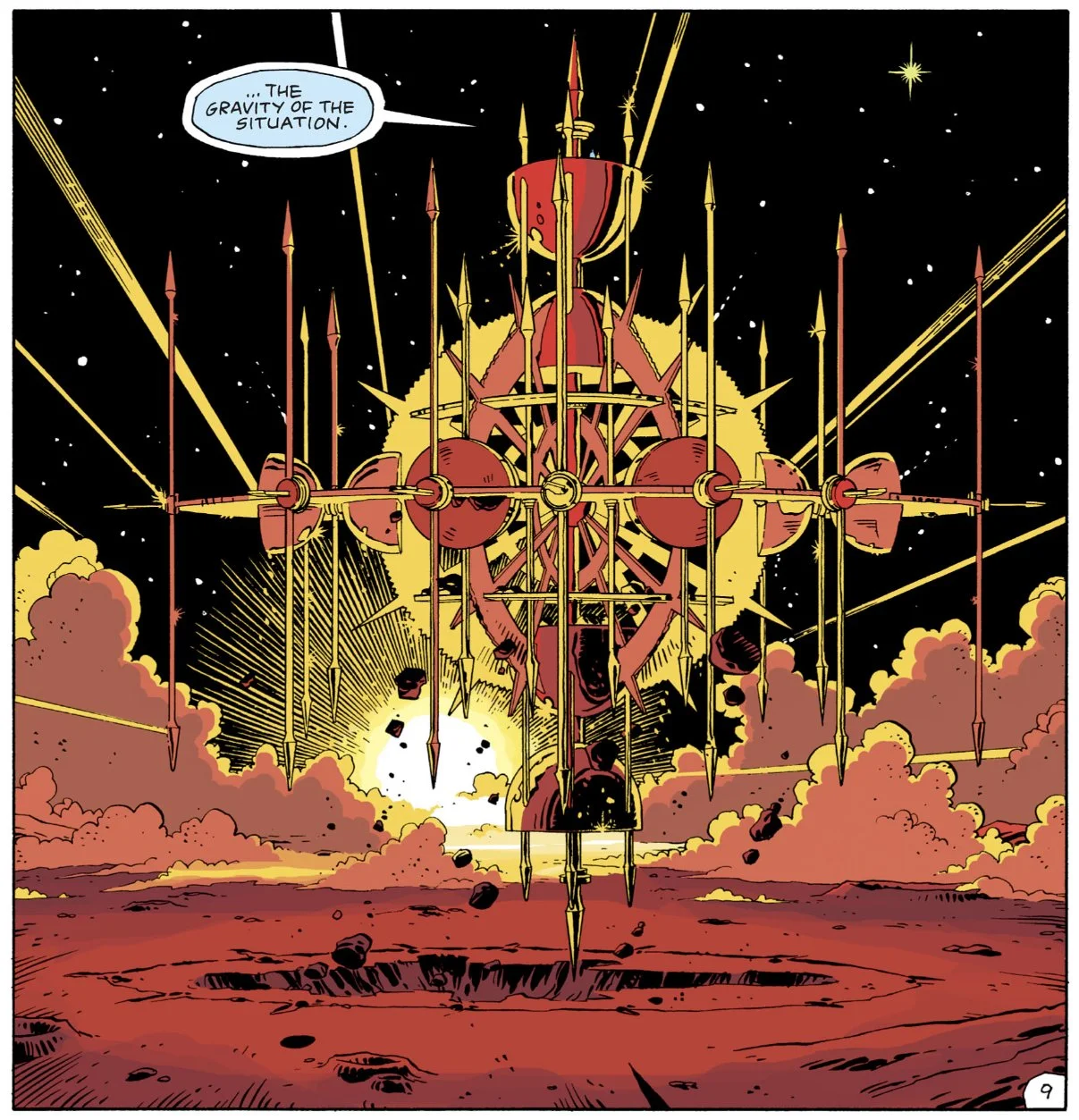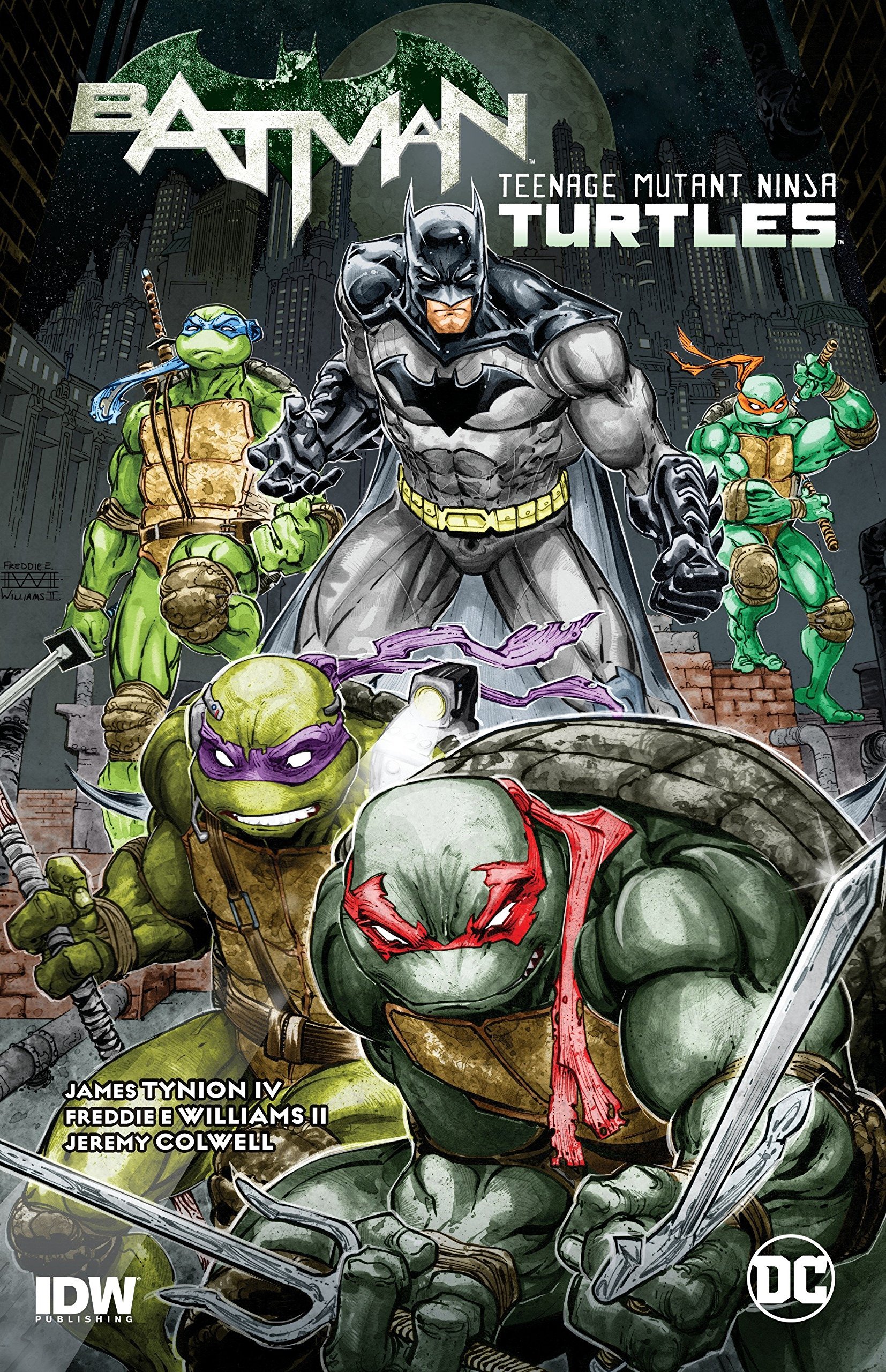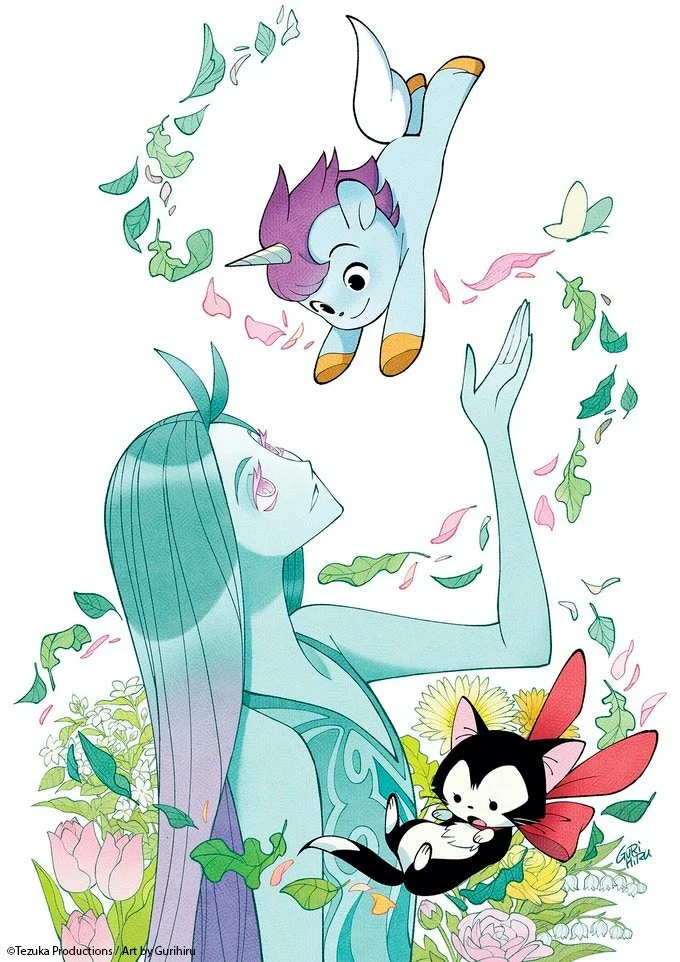Man Without Fear...By The Year: Daredevil Comics in 1999
By Bruno Savill De Jong — It’s 1999. Two teenagers commit a tragic school shooting at Columbine, Napster is launched, Spongebob Squarepants debuts, Dr Jack Kevorkian is imprisoned for assisting in euthanasia and the world prepares for the Y2K bug. People are listening to “Smooth,” watching The Matrix and reading Daredevil.
Written by Kevin Smith (1-8)
Illustrated by Joe Quesada (1-8)
Inks by Jimmy Palmiotti (1-8)
Colors by Dan Kemp (1), Laura DePuy (2-4), Drew Yackey (3-4), Richard Isanove (5-8)
Lettered by Liz Agraphiotis (1-4, 6-8), Dave Lanphear (5)
The end of the millennium was a crucial period for Marvel. After an overall disastrous decade, creatively and commercially, the company was on the edge of bankruptcy and cancellation. “Heroes Reborn” had been a mixed success of reenergizing its books, but it planted the seeds for a similar idea. Instead of outsourcing (and killing in-universe) the top-tier superheroes to Image creators, Marvel President Joe Calamari reached out to Event Comics founders Joe Quesada and Jimmy Palmiotti to experiment with a line of second-string titles under the imprint of Marvel Knights.
It was a huge success. Marvel Knights brought newfound interest into a more ‘mature’ Marvel Universe, and defined the company’s overall tone for the next decade, including Joe Quesada quickly rising from editor of Marvel Knights to Editor-in-Chief of all Marvel by 2000. Marvel Knights relaunched several under-sung characters, bringing us the like of Christopher Priest’s excellent Black Panther. And the forerunner of Marvel Knights was a “second stringer” that also “had a legacy.” This was Daredevil, which was relaunched and renumbered to be penciled and inked by Joe and Jimmy themselves, and written by their friend Kevin Smith.
It might seem strange now, but back in the ‘90s, Kevin Smith was an important pop-culture figure. His no-budget indie films like Clerks and Mallrats were highly acclaimed, discussed alongside the Sundance Wave of Quentin Tarantino and Steven Soderberg. A large part of Smith’s appeal was him being an open and “relatable” comic book fan when it wasn’t popular to be one. His films were not comic book films, but slacker films about comic book fans, authentically showing how the disaffected Generation X ingested and discussed pop-culture.
In this sense, Kevin Smith was hugely influential, peeling away the image of dorky Trekkie shut-ins in favor of the more casual ‘bro-y’ geekdom that is the standard today (for better or worse). His involvement with Marvel Knights helped bridge the gap between mainstream taste and niche interests, before the floodgates fully opened with big-budget Hollywood X-Men and Spider-Man (and Daredevil) adaptations in subsequent years.
Now Kevin Smith’s star has significantly dimmed, so much so that he is now basically a pop-culture commentator. The notion of films having heavy pop-culture references being revolutionary is now laughable. But at the time it was true, and Daredevil appealed to Kevin Smith as being “the Grateful Dead of comics,” an underrated series that chugged along throughout the years. It also helped that Smith was raised Catholic, and he was making his religious satire Dogma at the same time. The resultant 8-part storyline was Guardian Devil, one which (yet again) made Matt Murdock miserable and broke up his life, testing his faith so that it could be built back up again.
Candid interviews with Smith reveal that Guardian Devil was made up on the fly. Smith was way over deadline with the first script – a practice he became notorious for – and thought up the idea of ‘God’ directing Daredevil’s actions from watching the old Larry Cohen film God Told Me To. That film features random crimes being committed due to apparent divine intervention. And Guardian Devil has Matt be given a baby – apparently via immaculate conception – whom he is told is either the ‘savior’ or the anti-Christ, an infant he must either protect or destroy.
Deciding whether humanity should be saved or destroyed is a common superhero dilemma, but embodying it within an infant makes Matt consider his own parental figures as his life falls apart around him. One factor is that Foggy Nelson is accused of murdering one of their wealthy clients, leading to his biological mother Rosalind Sharpe abandoning her son, and Matt to quit her law firm. Guardian Devil also heavily features Sister Maggie, with Smith confirming what Frank Miller heavily implied in Born Again about her being Matt’s mother, who abandoned Battlin’ Jack Murdock and Matt when he was a child. Guardian Devil draws lines between these faulty maternal figures, even featuring Black Widow psychoanalysing Daredevil’s turbulent love-life as a result of his mother’s abandonment, seeking refuge in women (as well as God) that always seem to disappoint him.
Such women could also (cruelly) include Karen Page, who begins Guardian Devil by breaking up with Matt. She self-consciously feels that her sordid history means Matt will never truly accept her as an equal. And her worst fears are confirmed when she returns to Matt midway through Guardian Devil with the news that she has AIDS.
It’s a diagnosis which further signals Marvel Knights involvement in the ‘real world,’ making literal the buried anxieties from Born Again (published around the height of the AIDS Crisis). Karen feels punished for her past “sins,” and is contacted by the shadowy organization Sheol who suggest the anti Christ is manifesting this disease inside her, which she could end by delivering the baby. In any case, Karen’s wrestling with her past ends early after Bullseye is hired to take the child, and kills Karen in the process.
Karen Page was one of the original Daredevil characters, and since her return in Born Again, was re-established as the main love of Matt Murdock’s life. Needless to say her death absolutely crushes him. But it also puts Karen in the depressingly large group of Daredevil love-interests who have been killed off, be it Elektra (although she got better), Heather Glenn or Glorianna O’Breen. Each of these deaths are textbook ‘fridging,’ which is more upsetting since Karen Page – as a Silver Age damsel who was reinvented as a recovering junkie – had more depth and texture than writers were usually willing to give her.
Beyond being a trope to motivate Matt’s male angst, Karen’s death is a mark of intention for Marvel Knights, a moment to set it apart and signal a new era for Daredevil. And it does crushingly add to Matt’s tormented relationship with Catholicism which plays throughout Guardian Devil. When Karen left him, Matt had trouble reconnecting with God. Now that she’s dead, he is even more lost. Maybe there is a God, but he is not benevolent or peaceful, but a cruel and vengeful one who torments his mortal subjects.
Only, within Guardian Devil, there is no God. There is the Devil, as Dr Strange summons Mephisto (with the same design as during Nocenti and JRJR’s time) over this anti Christ plot, but he reveals there is nothing evangelical in the works. Instead, it turns out the whole thing was constructed by Mysterio, an elaborate scheme to wreck and destroy Daredevil’s life.
Mysterio was a classic Spider-Man villain who had recently fallen into disrepute and mockery, alongside a terminal cancer diagnosis. He vowed to go out in a blaze of glory, targeting Daredevil due to their shared “second-stringer” status. The ‘virgin birth’ was created through secret artificial insemination, Daredevil’s paranoia was enhanced by chemical toxins, and even Karen’s AIDS diagnosis was made-up by Mysterio. So, none of Guardian Devil had any divine purpose, and was only the desperate convoluted scheme of a dying madman.
Kevin Smith explains that he came up with this reveal as he was writing Guardian Devil. Which explains why Mysterio’s plan is so drawn-out and complicated. Yet I think the story overall works with the biblical elements all being “smoke and mirrors.” Earlier, Daredevil bitterly monologued at the “immorality plays” God stages for him with night-time muggings. And Mysterio later calls his own scheme a kind of “morality play.” So, Guardian Devil is a “morality play” with an emphasis on the artifice, invoking the nature of God to push Daredevil into extreme responses.
Therefore, Matt must remember that his fights are not world-ending decisions. Daredevil is not the actual Devil, but a man in a costume, doing the best he can against other mortal forces. The fate of humanity does not rest on this infant, so Matt can take solace in rescuing her as a regular mortal girl. The meaninglessness of Mysterio’s actions could have driven Daredevil insane, but he eventually manages to find the cosmic balance of it anyway, freed from being “the target” of God’s wrath, and freed to do “the Lord’s work” out of his own volition.
Kevin Smith clearly wasn’t used to making comics, with behind-the-scenes histories explaining his casual attitude towards deadlines. Inadvertently, this led to recreating the Marvel Method with Smith explaining the basic plot to Joe Quesada over the phone, who then made the layouts for it. Quesada’s Guardian Devil artwork is spritely and dynamic, particularly effective in the manic action or Daredevil swinging through the streets. Sometimes it seems too cartoony or elastic for a fairly serious storyline, but even then it works with the religious imagery Smith invokes. Plus, it’s easy to feel sympathy for Quesada, who was responsible for this risky Marvel Knights venture and had to guide Smith through making a comic as his artwork was squished out by Smith’s verbose dialogue.
Kevin Smith’s films are noted for their long-winded, often diatribe-heavy dialogue, and the early issues of Guardian Devil do suffer from being drowned in words. Even Mysterio’s uninterrupted monologue explaining his master plan is an example of this. Yet Guardian Devil is not exactly what you’d imagine a “Kevin Smith comic” to be. There are a few references to filmmaking (including his buddies’ Matt Damon/Ben Affleck’s Good Will Hunting) and some cheeky comedic beats, but there is no overly juvenile sense of humor, dick jokes or even heavy pop-culture references. Indeed, much of Guardian Devil feels oddly mannered, with characters talking in weighty language about existential concepts, as if Smith was trying very hard to take this seriously.
Smith obviously feels the weight of those that came before him. It’s interesting to view Guardian Devil as a ‘reboot’ of Daredevil, since so much hinges on past continuity, like Karen Page’s history or the law office of Rosalind Sharpe or even Mysterio not fighting Spider-Man since (Mysterio believes) he is currently a clone. Smith references not only Born Again but the Nocenti run (via Mysterio) and Chichester’s armored Daredevil. Matt describes Mysterio as “a product of too many movies and too much TV – regurgitating only what’s gone before,” and it’s easy to read Smith as self-consciously deprecating himself at this attempt to drive Daredevil insane having been done before.
Yet just because something isn’t wholly original, it doesn’t mean it’s worthless. And Guardian Devil does remain an entertaining and engaging story, particularly when grappling with the intimate and tormented inner-thoughts of Matt. Looking back now, Guardian Devil might have more value as a piece of comics history than as its own story, since it’s easier to see the cracks and jumbled pacing of the story as the creators got it off the ground.
But Guardian Devil did represent an important turning point not only for Daredevil, but Marvel Comics as a whole. Karen Page gives Matt a posthumous letter, pleading for him to use her life insurance money for “something selfish.” So Matt rebuilds his own brownstone apartment (blown up in Born Again) and reforming the old Nelson & Murdock offices. Out of Karen’s death, a new start can grow. Even if Guardian Devil was a brief and imperfect storyline, it allowed Daredevil to continue into a new decade (a new millennium) and fresh imprint, where his stories would only skyrocket.
Read classic Daredevil Comics!
Check out past installments from The Man Without Fear…By The Year!
Check out Bruno Savill De Jong’s last regular series, Gotham Central Case by Case!
Bruno Savill De Jong is a recent undergraduate of English and freelance writer on films and comics, living in London. His infrequent comics-blog is Panels are Windows and semi-frequent Twitter is BrunoSavillDeJo.













